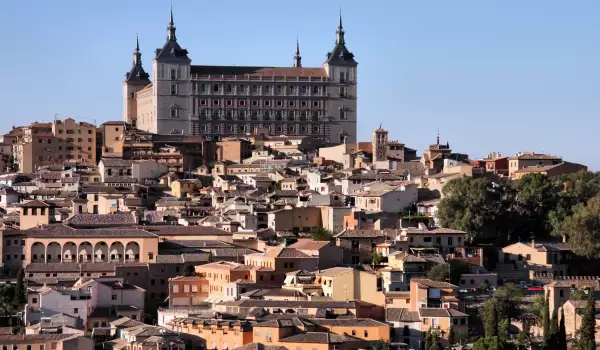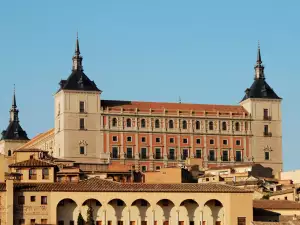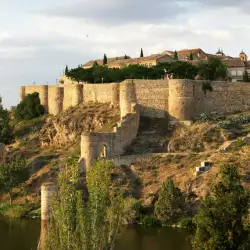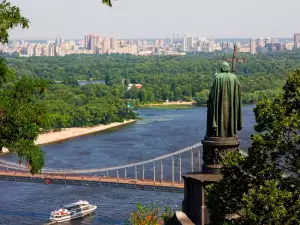Toledo

Toledo is one of the oldest European cities, and perhaps "the most Spanish" city. Located 75 km southwest of Madrid, Toledo is located in central Spain, in the centre of the province Toledo and the autonomous region of Castile-La Mancha. In history Toledo was one of the former Capitals of the Spanish Empire and a place of coexistence of Christian, Jewish and Muslim cultures. Many historical monuments in the city are the reason it is listed as part of the cultural heritage of UNESCO, in 1986.
Toledo is the birthplace of many famous Spaniards, including the painter El Greco. Currently, in Toledo live about 83 000 people. Since Roman times there are many swords, knives and daggers produced here, which is a tradition preserved to this day. Toledo is located in the meander of the River Tagus. It is surrounded by a beautiful scenic route. Old Town Toledo is situated on a mountain hill and surrounded on three sides by a river. Here is also a historical treasure of Toledo, in the face of the Cathedral, Alcazar Castle and many old buildings.

The ancient name of Toledo is Toletum, and in 193 BC. it was captured by the Roman armies. The Romans used its convenient location, surrounded on three sides by the Tagus River, and it became an important fortress and a large military colony.
Visigoths invaded Toledo in the 5th century and in the late 6th century village was now their capital. In the 8th century Toledo was conquered by the Moors, which did not prevent its further development and prosperity. The Arabic name of the town was Tulaytulah and at that time it was known as an important cultural and economic centre where many cultures co-exist - the Moors, Muslims, Jews and Christians.

The fame of Toledo in Europe and the Islamic world comes from the production of steel, especially in high-quality swords and other weapons. Until 1085 Toledo is controlled by the Moors, and then was conquered by the Castilian King Alfonso VI. The city managed to retain religious tolerance in the following years, but in the late 15th century begun repression against Jews and Moors, which gradually brought Toledo to collapse. Gradually its importance was reduced and in 1561 King Philip II moved the royal court in Madrid.
In an era of being an Islamic Caliphate, Toledo experienced a period of unprecedented prosperity and glory. It develops both science and art. The city can now be seen as a home to important religious monuments like the Santa Maria la Blanca synagogue, which is the oldest synagogue in Europe overall. There are also the Synagogue de el Transito from the 16th century and the Mosque El Cristo de la Luz of 999.
Old Town Toledo is a priceless architectural jewel. The peak is dominated by the Alcazar castle, whose history dates back before the 3rd century and the present structure was transformed around 1535. Toledo Cathedral was built between 1226-1493 and is modelled on the Bourges Cathedral, by combining some ornaments of the Moorish architecture. Cathedral Toledo has primacy among the Spanish cathedrals, as it can be seen with the magnificent baroque altar, known as El Transparente. In the old part of Toledo is the central city market Zocodover.
Be sure to try the local cuisine, which is the result of the culinary traditions of Christians and Arabs. Favourite in Toledo are lamb, chicken and corn bread, but the undisputed culinary pride is Manchego cheese and the Toledo marzipan. In the vicinity of Toledo there are many more intriguing sights like the castle Toledo, located about 20 km southeast of the city. About 60 km away is Castle Consuegra, situated on a hill preceded by a plethora of windmills. Near Toledo is a beautiful Moorish architecture of the Guadamur Castle.















